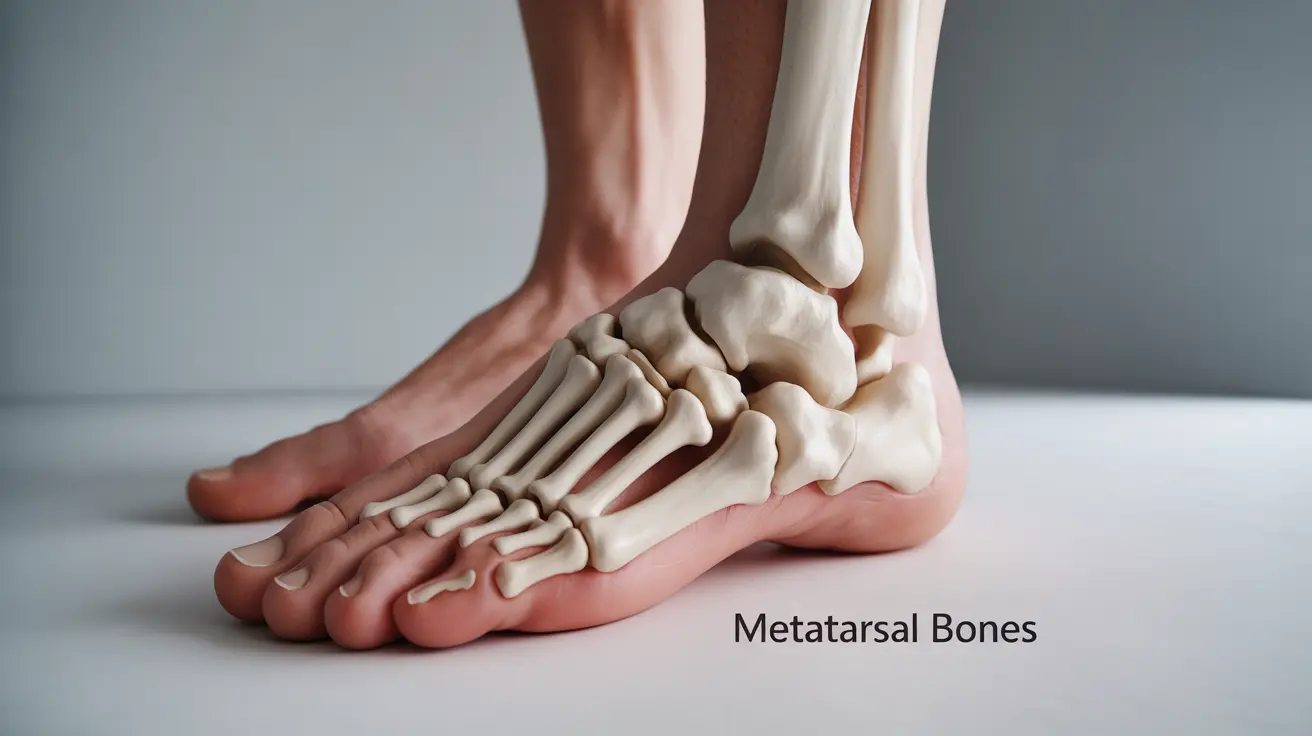The metatarsals, five long bones in each foot that connect your ankle to your toes, play a crucial role in your daily mobility and balance. When these bones experience stress, injury, or inflammation, it can significantly impact your ability to walk, run, or even stand comfortably. Understanding these important foot structures and how to care for them is essential for maintaining optimal foot health.
Whether you're an athlete dealing with stress fractures or someone experiencing general foot discomfort, knowing about metatarsal health can help you prevent injuries and seek appropriate treatment when needed. This comprehensive guide explores everything from common symptoms to effective treatment options.
Understanding Metatarsal Anatomy and Function
The metatarsal bones form the front part of your foot's arch and work together to distribute your body weight during movement. Each metatarsal has a specific role: the first metatarsal, being the thickest, bears the most weight during walking, while the smaller metatarsals provide stability and help with balance.
These bones are essential for proper foot mechanics, allowing you to push off the ground when walking or running. They also help maintain the transverse arch of your foot, which provides crucial shock absorption during movement.
Common Metatarsal Problems and Symptoms
Metatarsalgia
This common condition causes pain and inflammation in the ball of the foot. Symptoms typically include sharp, aching, or burning pain that worsens when standing, walking, or flexing your feet. Some people describe feeling like they're walking on pebbles.
Stress Fractures
These tiny cracks in the metatarsal bones often develop gradually from repetitive stress. Athletes and dancers are particularly susceptible. Signs include localized pain that increases with activity and decreases with rest, along with possible swelling.
Morton's Neuroma
While not strictly a metatarsal condition, this painful condition affects the area between the metatarsal bones, causing sharp, burning pain and the sensation of walking on a pebble or having a bunched-up sock under your toes.
Diagnosis and Treatment Options
Healthcare providers typically diagnose metatarsal issues through physical examination, medical history review, and imaging tests such as X-rays or MRIs. Treatment approaches vary depending on the specific condition but often include:
- Rest and activity modification
- Ice therapy for pain and swelling
- Proper footwear selection
- Custom orthotics or metatarsal pads
- Physical therapy exercises
- Anti-inflammatory medications
- In severe cases, surgical intervention
Prevention and Long-term Care
Preventing metatarsal problems involves several key strategies:
- Wearing properly fitted shoes with adequate support
- Gradually increasing activity levels
- Maintaining a healthy weight
- Regular foot stretching and strengthening exercises
- Using appropriate protective equipment during sports
Frequently Asked Questions
What are the common symptoms and causes of metatarsal pain or metatarsalgia?
Common symptoms include sharp pain in the ball of the foot, burning sensation, and increased discomfort when walking or standing. Common causes include high-impact activities, ill-fitting shoes, foot deformities, and excess weight. Some people experience numbness or tingling in the affected area.
How are metatarsal fractures and injuries typically diagnosed and treated?
Diagnosis typically involves physical examination and imaging tests like X-rays or MRI scans. Treatment depends on the severity but may include rest, immobilization, ice therapy, and in some cases, surgery. The recovery period varies from several weeks to months.
What types of footwear and orthotic supports help relieve pressure on the metatarsal bones?
Shoes with wide toe boxes, good arch support, and cushioning help distribute pressure evenly. Custom orthotics, metatarsal pads, and arch supports can provide additional relief by redistributing weight and reducing pressure on specific areas.
How do metatarsal bones contribute to foot arches, balance, and walking mechanics?
Metatarsals form part of the foot's arch system, helping to distribute body weight and provide leverage during walking. They play a crucial role in balance by helping to grip the ground and assist in the push-off phase of walking or running.
What exercises or home remedies can aid recovery from metatarsal injuries or pain?
Helpful exercises include toe stretches, arch strengthening exercises, and gentle foot rolling with a tennis ball. Home remedies include ice therapy, rest, elevation, and wearing supportive footwear. Always consult a healthcare provider before starting any exercise program, especially when recovering from an injury.




